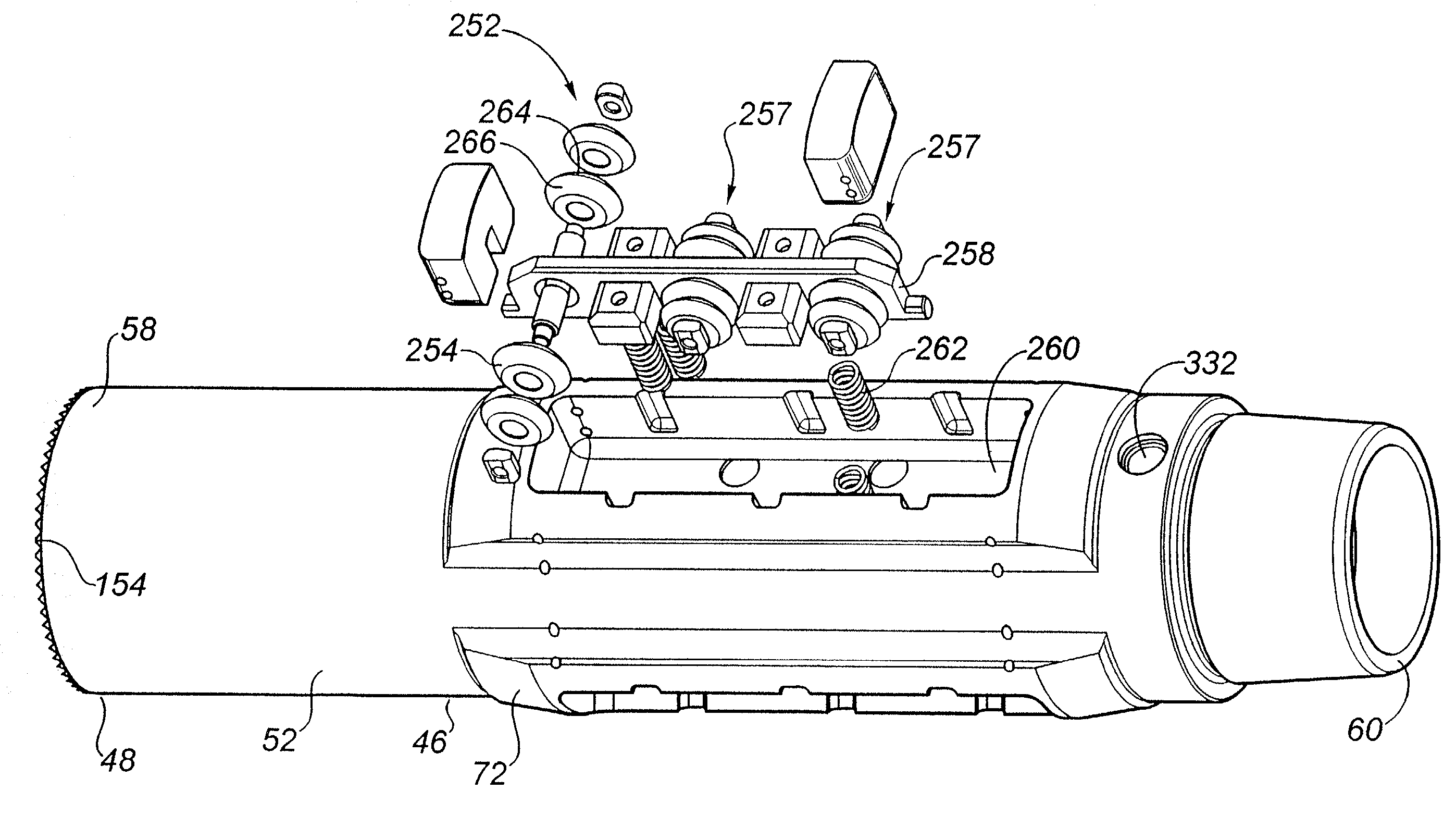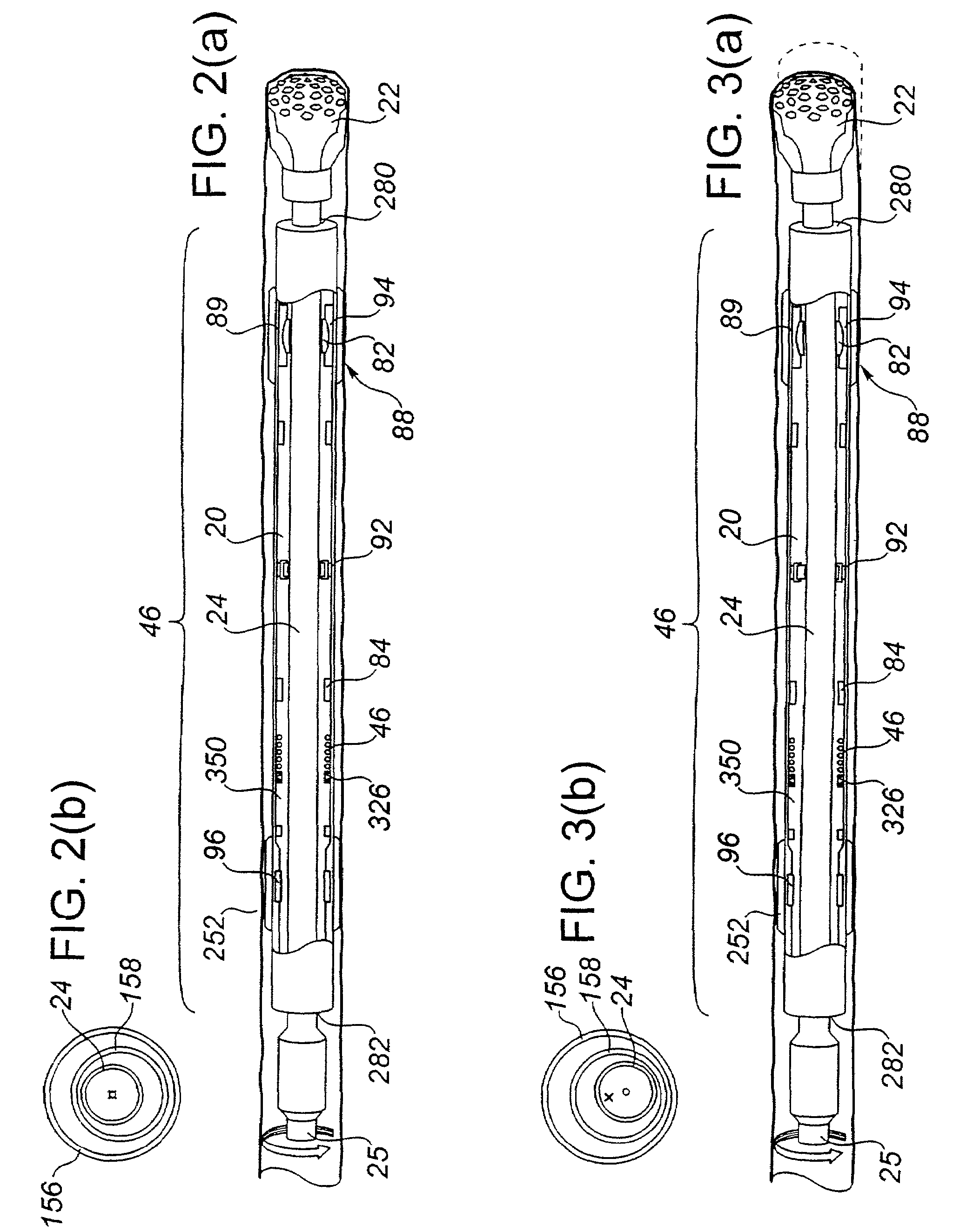Anti-rotation device for a steerable rotary drilling device
a rotary drilling and anti-rotation technology, which is applied in the direction of drilling pipes, drilling rods, directional drilling, etc., can solve the problems of reduced drilling bit penetration rate, frequent problems, and wear of downhole motors, and achieve the effect of facilitating the operation of the drilling direction control device and simplifying drilling operations
- Summary
- Abstract
- Description
- Claims
- Application Information
AI Technical Summary
Benefits of technology
Problems solved by technology
Method used
Image
Examples
Embodiment Construction
[0189]The within invention is comprised of a drilling direction control device (20) and a method for using the device (20). The device (20) permits directional control over a drilling bit (22) connected with the device (20) during rotary drilling operations by controlling the orientation of the drilling bit (22). As a result, the direction of the resulting wellbore may be controlled. Specifically, in the preferred embodiment, the device (20) and method of the within invention maintain the desired orientation of the drilling bit (22) by maintaining the desired toolface of the drilling bit (22) and the desired bit tilt angle, while preferably enhancing the rotations per minute and rate of penetration.
[0190]The drilling direction control device (20) is comprised of a rotatable drilling shaft (24) which is connectable or attachable to a rotary drilling string (25) during the drilling operation. More particularly, the drilling shaft (24) has a proximal end (26) and a distal end (28). The...
PUM
 Login to View More
Login to View More Abstract
Description
Claims
Application Information
 Login to View More
Login to View More - R&D
- Intellectual Property
- Life Sciences
- Materials
- Tech Scout
- Unparalleled Data Quality
- Higher Quality Content
- 60% Fewer Hallucinations
Browse by: Latest US Patents, China's latest patents, Technical Efficacy Thesaurus, Application Domain, Technology Topic, Popular Technical Reports.
© 2025 PatSnap. All rights reserved.Legal|Privacy policy|Modern Slavery Act Transparency Statement|Sitemap|About US| Contact US: help@patsnap.com



